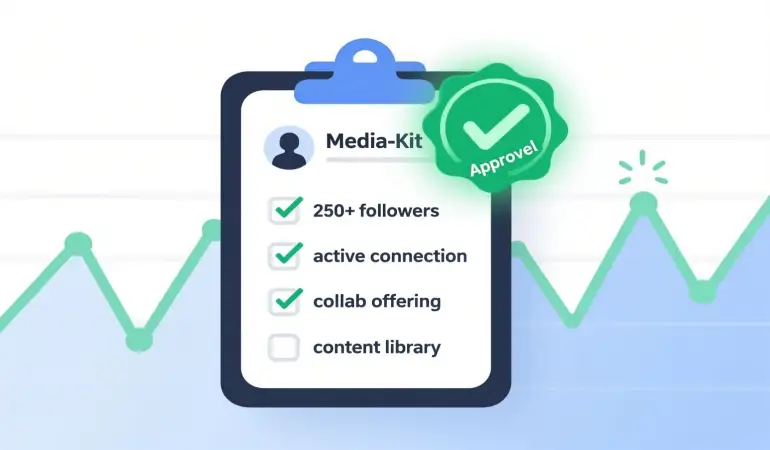How to Choose A Profitable Niche: Turn Your Passion Into Purpose
Learn how to turn your passion into profit by selecting a lucrative affiliate niche, validating demand, comparing top programs, spotting content gaps, and launching with a clear, focused strategy.
September 28, 2025 12:19
Understand Why Your Niche Choice Matters
Choosing your affiliate niche sets the course for everything that follows. It shapes your content plan, audience, monetization options, and how motivated you’ll feel six months from now. A mismatch between your interests and the niche’s earning potential leads to stalled projects and inconsistent posting. A good match gives you momentum.
Start with two simple realities. First, you’ll create far better content if you care about the topic or actively want to learn it. Second, some niches pay better and attract clearer buyer intent than others. Your job is to find the overlap.
Think of it as building on familiarity while checking that real opportunities exist. Passion plus proof.
Clarify Your Goals And Constraints
Before brainstorming, set boundaries. Goals define success; constraints define the runway you have to reach it. Both guide better choices than vague enthusiasm.
Decide on your primary outcome. Do you want a side income within nine months? A full-time business within two years? A test project to learn the ropes with minimal risk? Different goals suggest different niches and speeds.
Now list constraints. Time available per week. Budget for tools or content outsourcing. Your tolerance for slow seasons. Any skills you won’t develop (video, coding, outreach). These limits steer you toward niches and formats you can sustain.
Write this down. Keep it visible while you evaluate ideas.
Audit Your Passions And Expertise
Map What You Know And Enjoy
Open a blank document. Make three columns: Things I Use, Things I Know, Things I Want To Learn. Under each, free-write for 10 minutes. Be specific: trail running shoes, SaaS email tools, espresso gear, budget cameras, minimalist travel, baby carriers, home gym equipment, pet grooming tools, backyard pizza ovens.
Add a short note on how you interact with each topic. Daily user? Occasional hobbyist? Long-time professional? This context matters because lived experience translates into helpful, credible content.
Curiosity And Endurance Check
Passion gets you started; endurance keeps you publishing. Ask two questions for each candidate topic:
1) Could I create 50 useful pieces without running out of steam?
2) Am I genuinely curious about what’s new here in 12 months?
If the answer is no, move it down the list. Boredom kills more affiliate sites than competition.
Brainstorm And Narrow Ideas
From Categories To Micro Niches
Large categories are crowded and vague. Go smaller, where buyers have clearer intent. Instead of “fitness,” think “adjustable dumbbells for small spaces,” “women’s trail running shoes with wide toe boxes,” or “budget power racks under $500.”
Drill down by audience, use case, budget, and constraints. Who is this for? What problem do they face? What context limits their choices? Micro niches let you create focused content that attracts ready-to-buy readers.
Evergreen Versus Trend Driven Topics
Balance staying power with excitement. Evergreen niches (coffee gear, home improvement tools, pet supplies) offer consistent demand. Trend-driven niches (AI tools, VR headsets, seasonal gadgets) can spike quickly but fade or change fast.
If your goal requires steady income, lean evergreen. If you have time and enjoy fast research cycles, you can add a trend angle. A hybrid approach works: an evergreen core with timely “what’s new” coverage.
Validate Demand And Monetization
Search Intent And Audience Pain Points
Open your browser and type a few seed queries for each idea: “best…,” “review,” “vs,” “how to choose,” “for specific use case.” Read the first two pages of results. What questions keep showing up? What features matter most? Where do people get stuck?
Check autocomplete, People Also Ask, and related searches. These reveal language your audience uses. Collect these into a sheet titled Questions, Features, Comparisons, and Obstacles. This becomes your topic map and buying triggers list.
Affiliate Programs And Commission Potential
Next, verify whether the topic has affiliate programs you trust. Search “product type affiliate program” and note commission rates, cookie windows, payout minimums, and approval requirements. Include large networks and brand-run programs.
A rate alone can mislead. Consider average order values and refund rates. A 3% commission on a $1,000 product can outperform 10% on a $30 item. Reliability matters too; aim for programs with clear terms and regular payments.
Product Pricing And Conversion Likelihood
Healthy niches blend price points. High-ticket items bring bigger commissions but lower conversion rates and longer consideration cycles. Low-ticket accessories convert more often and fill gaps between major product launches.
Sketch a simple funnel: top picks guides, mid-cycle comparisons, and quick-win accessory lists. If you can cover all three, you’re closer to a resilient monetization plan.
Analyze Competition And Your Edge
SERP Review And Content Gap Analysis
Look beyond authority scores. Study the content itself. For your main keywords, evaluate what top results do well and where they fall short. Are specs listed but real-world use missing? Are buyer types lumped together instead of segmented by needs? Are images generic stock instead of hands-on photos?
Document gaps: missing subtopics, outdated picks, weak buyer guides, no budget-specific advice, or lack of setup and maintenance tutorials. Gaps are entry points.
Differentiation You Can Sustain
Your edge must be repeatable. A one-off mega guide won’t carry a site. Examples of sustainable differentiation:
- Hands-on testing with your own images and measurements.
- Niche-specific frameworks (“fit profiles” for shoes, “brew recipes” for coffee gear).
- Transparent scoring criteria and change logs for updates.
- Tight audience segmentation (e.g., small apartments, van life, left-handed golfers).
Pick one or two you can deliver week after week.
Check Your Content Runway
Generate Headline Ideas For Core Topics
For your top three niche candidates, write 30 headline ideas each. Include “best” lists, comparisons, buyer guides, maintenance how-tos, and problem-solution posts. If you struggle to hit 30 for a niche, it might be too narrow or unfamiliar.
Group headlines by clusters. Each cluster should support a cornerstone page. This clustering proves the niche can support a coherent site structure and internal linking strategy.
Choose Formats You Can Deliver Consistently
Pick one primary format you enjoy and can sustain: long-form blog posts, short-form videos, comparison charts, or email mini-guides. Add one secondary format for repurposing (e.g., turn posts into short videos).
Be honest about your bandwidth. It’s better to publish two great posts weekly than to promise daily content and burn out. Consistency compounds trust and traffic.
Evaluate Compliance And Trust
YMYL Considerations And Authority Needs
If your niche touches health, finance, or safety, the bar is higher. You’ll need stronger credentials, quality references, and a clear editorial policy. Consider partnering with qualified reviewers or sticking to lower-risk product categories in those spaces, such as accessories or general education.
Even outside YMYL, show signals of credibility: author bios, about page with your experience, date stamps, update logs, and links to reputable sources. Trust is a conversion driver.
Ethical Promotion And Disclosures
Use honest language. Disclose affiliate relationships where links appear. Prioritize the reader’s interest over short-term clicks. Recommend products you would use or have tested, and clearly explain limitations or trade-offs.
Short-term gains from hype lead to long-term losses in reputation. Clear, ethical guidance builds loyal readers who return before buying.
Score And Shortlist Your Options
Simple Scoring Matrix
Create a 1–5 score for each niche across these dimensions: Interest/Endurance, Content Depth, Demand Signals, Monetization Strength, Competition Gaps, Compliance Burden, and Resource Fit. Weight factors to match your goals. For a part-time creator, Resource Fit and Endurance might carry more weight.
Add up the weighted scores. You should see two or three candidates separate from the rest.
Practical Tie Breakers Based On Resources
Still tied? Choose the niche where you can publish your first ten articles fastest with your current gear and knowledge. Or pick the one where you already own products to photograph and test. Real assets beat theoretical advantages.
Speed to first publish matters. Momentum fuels motivation.
Decide And Position Your Niche
Audience, Promise, Unique Angle
Write a positioning statement in one sentence: I help specific audience choose and use product type for context/constraint by your repeatable edge. Examples: “I help urban apartment dwellers build compact home gyms by testing space-saving equipment with real measurements and noise levels.”
This statement becomes your filter for topics, affiliate partners, and page layouts. It also shapes your brand voice and site design.
Immediate Next Steps To Get Started
1) Finalize your shortlist and pick one niche. Commit for six months.
2) Create a topic map with three cornerstone pages and 30 supporting articles.
3) Draft your editorial standards (testing methods, review criteria, disclosure placement, update cadence).
4) Apply to relevant affiliate programs now, even if your site is new; some approvals take time.
5) Publish your first five posts covering a mix of intent: one “best” roundup, two comparisons, one buyer guide, and one troubleshooting tutorial related to your picks.
6) Add author bio, about page, and disclosure page.
7) Set a schedule you can keep. Weekly is fine. Biweekly can work too.
Keep it simple. Ship your first cluster.
Bringing It All Together
Start with what you’re passionate about or ready to learn deeply. Verify that the niche has real questions, products worth recommending, and programs that pay reliably. Study competitors to locate gaps you can fill repeatedly. Ensure your content plan is long enough to keep publishing and your formats match your time and skills.
Then decide. Focus on a narrow audience with a clear promise and a repeatable edge. Build trust through honest reviews, transparent criteria, and visible disclosures.
One strong niche beats five half-built sites.
Begin today with your first ten headlines. Then write one. Then the next.






